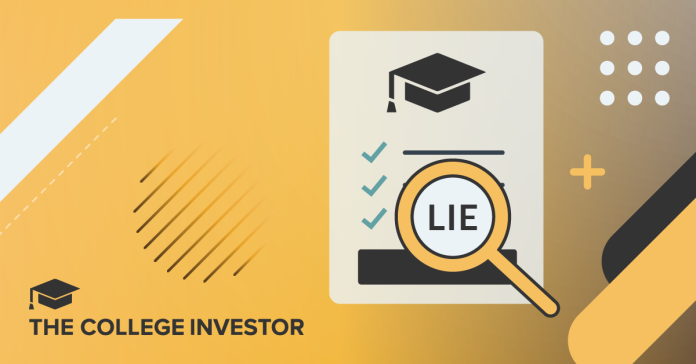Income-Driven Repayment (IDR) plans provide affordable monthly student loan payments by basing the payments on a portion of the borrower’s discretionary income, as opposed to the amount they owe.
Generally, IDR plans will yield lower student loan payments when the borrower’s total student loan debt exceeds their annual income. However, there are ways to decrease the student loan payments even further.
Monthly student loan payments under IDR plans are based on a percentage of discretionary income. There are legitimate ways of reducing discretionary income and thereby reducing the student loan payment.
Discretionary income is calculated by subtracting a multiple of the poverty line from Adjusted Gross Income (AGI). Discretionary income may be reduced by reducing AGI or by increasing the applicable poverty line.
Of course, avoid fraudulent tactics like underreporting income or falsely inflating family size, as these carry severe penalties.
How To Reduce AGI To Lower Your Student Loan Payment
Reducing your AGI directly translates to lower discretionary income and thus, lower IDR payments. Several legitimate strategies can help achieve this.
Maximize Retirement Plan Contributions
Retirement plan contributions are a type of above-the-line exclusion from income, which are subtracted from income before calculating AGI.
Contributing the maximum allowable amounts to tax-advantaged retirement plans significantly lowers your taxable income.
For 2025, this includes:
- Up to $23,500 in contributions to 401(k), 403(b), or government 457(b) plans, with a $31,000 limit for those age 50 and over, and $34,750 for those aged 60-63 due to SECURE 2.0.
- Up to $7,000 in deductible traditional IRA contributions, increasing to $8,000 for those age 50 and older.
- Employer contributions also don’t count toward AGI, so you should maximize the employer match on retirement plan contributions. Some employers will base the employer match on student loan payments as an alternative to employee retirement plan contributions.
- Avoid unnecessary retirement plan withdrawals, as distributions will increase AGI.
- Health savings account contributions of up to $4,300 will reduce AGI.

Defer Income Strategically
Delaying bonuses or other forms of income can temporarily lower your AGI in a specific tax year. However, it may be better to have more uniform income without significant annual fluctuations.
Claim the Student Loan Interest Deduction
You can deduct up to $2,500 in interest paid on federal and private student loans, directly reducing your AGI.
Note that this deduction is not available to married borrowers filing separately and is based on actual interest paid, not waived amounts. Employer-paid student loan repayment assistance programs (LRAPs) may reduce or eliminate your eligibility for this deduction. Tax-free employer LRAPs are available through the end of 2025, but are likely to be extended or made permanent.
Related: Best Education Tax Deductions And Tax Credits
Utilize Other Above-The-Line Deductions
Several other deductions can lower your AGI:
- Self-employed individuals and small business owners can deduct legitimate business expenses.
- While not applicable for those pursuing Public Service Loan Forgiveness (PSLF), substituting stock options for part of your pay can defer income recognition until the options are exercised.
- Claiming a capital loss of up to $3,000 can offset income. A $3,000 decrease in AGI can reduce your monthly student loan payment by $25 or more under an income-driven repayment plan.
- The penalty for early withdrawal of savings from a Certificate of Deposit (CD) is deductible.
- Eligible educators can deduct certain expenses.
Married Borrowers Can File Separate Tax Returns
Married borrowers can file their federal income tax returns as married filing separately to have only their own income counted when calculating the monthly loan payments under an income-driven repayment plan. Their spouse’s income is excluded, although the spouse may still be counted in household size.
However, married taxpayers who file separate returns lose valuable tax breaks, such as the student loan interest deduction and a higher standard deduction.
How To Increase The Poverty Line
IDR plans factor in household size by subtracting a multiple of the poverty line from income when calculating the monthly student loan payment. Therefore, a larger household size leads to a lower discretionary income and a reduced loan payment.
The poverty line varies based on the borrower’s location (Continental U.S., Alaska, or Hawaii) and family size.
In 2025, each additional family member increases the poverty line by approximately $5,500 in the Continental U.S., with higher amounts for Alaska and Hawaii. Consequently, each additional family member can decrease the monthly student loan payment by about $45 or more.
Borrowers should ensure that their reported family size accurately reflects the number of dependents claimed on their federal income tax return. While they can update this if their family size increases after the end of the tax year, it must align with subsequent tax filings.
Don’t Engage In Fraud
Some borrowers may be underreporting income or overreporting family size when applying for an income-driven repayment plan to reduce their monthly student loan payment. This is fraud.
Beware, some document preparation scams will inflate family size in order to lower the student loan payments.
The U.S. Government Accountability Office (GAO) has reported instances of borrowers providing inaccurate information, including claiming an implausibly large number of dependents or zero income when wage data indicated otherwise.
The GAO’s report, Federal StudentLoans: Education Needs to Verify Borrowers’ Information for Income-Driven Repayment Plans, GAO-19-347, suggested that tens of thousands of borrowers may have provided false information when requesting an income-driven repayment plan in 2016 and 2017. More than 35,000 borrowers claimed to have a family size of 9 or more. 1,200 borrowers claimed a family size of 16 or more, including two borrowers who each claimed a family size of 93. A third of borrowers who reported zero income actually had wages high enough to require a non-zero monthly student loan payment. The overall fraud rate may be as high as 3% based on the GAO data.
Engaging in such fraudulent activities carries severe consequences. Under the Higher Education Act of 1965 (20 USC 1097), you could face fines up to $20,000 and imprisonment for up to 5 years, in addition to being required to pay restitution. Furthermore, you may be subject to penalties under mail and wire fraud statutes, which can include significantly longer prison sentences and higher fines. Since the Income-Driven Repayment (IDR) Plan Request form is signed under penalty of perjury (a felony), lying on the form can result in an additional five years of imprisonment and further fines (18 USC 1621).
The Department of Education cross-references the information provided on your IDR application with your current and subsequent federal income tax returns and other federal income databases. Discrepancies will be detected.
Other Ways Of Saving On Student Loans
Enroll In Autopay
The federal government offers a 0.25% interest rate reduction for borrowers who set up automatic monthly payments from their bank account.
While this directly reduces the total interest paid over the life of the loan, its impact on the monthly payment under an IDR plan is less significant. The loan payments under an IDR plan are based on the borrower’s income and not the amount owed.
Create your very own Auto Publish News/Blog Site and Earn Passive Income in Just 4 Easy Steps






